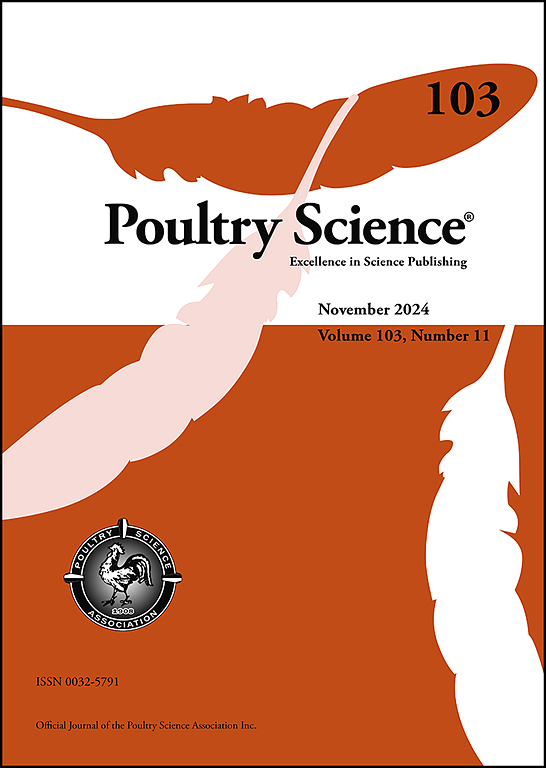Fecal Microbiota Landscape of Commercial Poultry Farms in Faisalabad, Pakistan: A 16S rRNA Gene-based Metagenomics Study
IF 3.8
1区 农林科学
Q1 AGRICULTURE, DAIRY & ANIMAL SCIENCE
引用次数: 0
Abstract
This study explores the microbiota of broiler and layer farms, aiming to understand how genetic breed, age, and farm type influence microbial communities in commercial settings. Fecal samples from 18 poultry farms (twelve layers and six broilers) in Faisalabad, Pakistan were analyzed using 16S rRNA gene sequencing of the V3-V4 region to evaluate bacterial composition. The dominant phylum, Firmicutes, accounted for 58.72% of the microbial population, with Lactobacillus being the most abundant genus in both broilers and layers. The total abundance of potentially pathogenic genera was also assessed with Enterococcus and Corynebacterium being the most prevalent across all farms, regardless of bird type. Layers exhibited greater microbial richness and diversity than broilers, while the Karachi cage system (KCS) farm type showed higher richness than Floor system (FS). Although the breed significantly influenced microbial diversity, age was not a determining factor. Co-occurrence analyses revealed close interactions among phyla (Actinobacteriota, Proteobacteria, Firmicutes, Fusobacteriota, and Bacteroidota) and genera (Lactobacillus, Brevibacterium, Enterococcus), suggesting their pivotal roles within the microbial community. Additionally, functional analysis detected important metabolic pathways and traced microbial signatures of key pathogenic bacteria, enhancing our understanding of microbial contributions to poultry health. Despite limitations such as the need for broader geographic sampling and accounting for diet and medication, this study advances microbiome research in Pakistan's poultry sector, emphasizing consistent taxa and opening avenues for future investigations into microbiome manipulations for improved food safety and achieve better sustainable practices.
求助全文
约1分钟内获得全文
求助全文
来源期刊

Poultry Science
农林科学-奶制品与动物科学
CiteScore
7.60
自引率
15.90%
发文量
0
审稿时长
94 days
期刊介绍:
First self-published in 1921, Poultry Science is an internationally renowned monthly journal, known as the authoritative source for a broad range of poultry information and high-caliber research. The journal plays a pivotal role in the dissemination of preeminent poultry-related knowledge across all disciplines. As of January 2020, Poultry Science will become an Open Access journal with no subscription charges, meaning authors who publish here can make their research immediately, permanently, and freely accessible worldwide while retaining copyright to their work. Papers submitted for publication after October 1, 2019 will be published as Open Access papers.
An international journal, Poultry Science publishes original papers, research notes, symposium papers, and reviews of basic science as applied to poultry. This authoritative source of poultry information is consistently ranked by ISI Impact Factor as one of the top 10 agriculture, dairy and animal science journals to deliver high-caliber research. Currently it is the highest-ranked (by Impact Factor and Eigenfactor) journal dedicated to publishing poultry research. Subject areas include breeding, genetics, education, production, management, environment, health, behavior, welfare, immunology, molecular biology, metabolism, nutrition, physiology, reproduction, processing, and products.
 求助内容:
求助内容: 应助结果提醒方式:
应助结果提醒方式:


